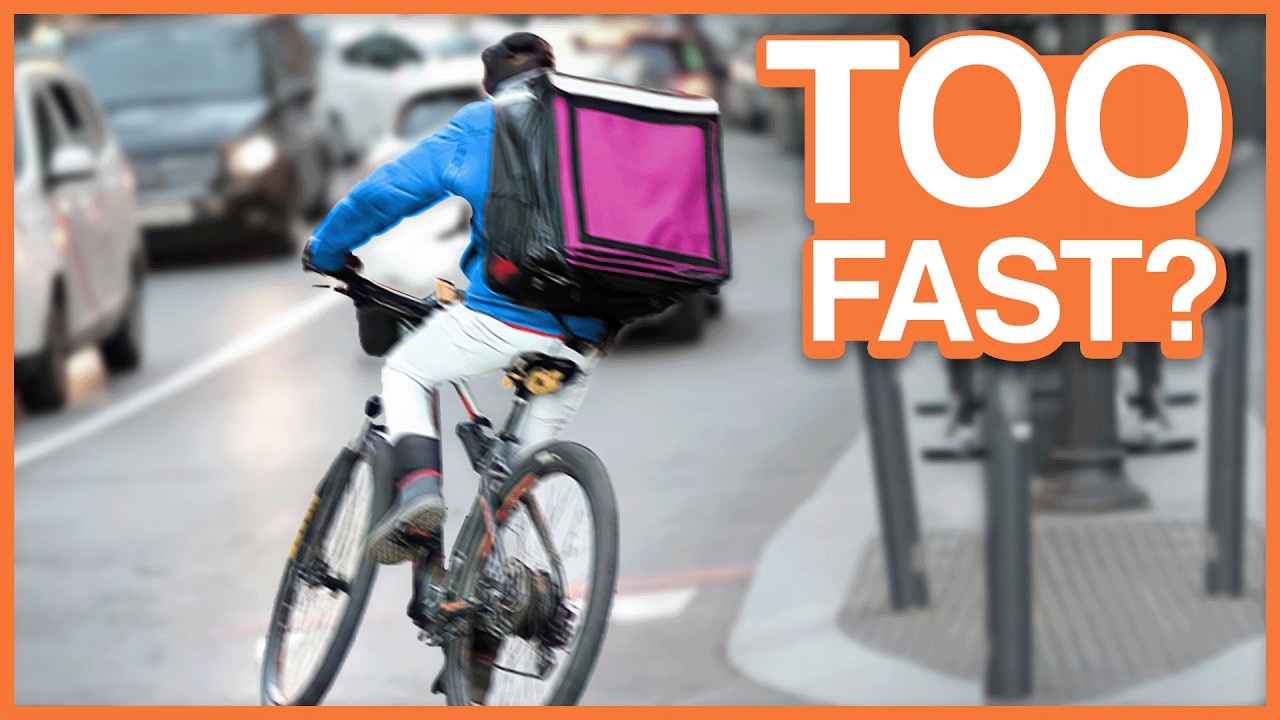Can Groceries Be Delivered Too Quickly?!
Unleash Your Creative Genius with MuseMind: Your AI-Powered Content Creation Copilot. Try now! 🚀
In the age of on-demand everything, there's a fascinating phenomenon sweeping across Europe – flash delivery services. These services promise to deliver groceries and household goods to your door within minutes, bringing an unprecedented level of convenience and, dare I say, laziness to our lives. But are these lightning-fast deliveries too good to be true?
The Flash Delivery Landscape
Picture this: Amsterdam, a city adorned with recognizable bicycles zipping through its streets. Here, flash delivery services like Flink, Gorillas, and Getter have become part of the urban fabric. These services offer a product selection smaller than traditional grocery stores, more akin to convenience stores, but with an impressive array of products.
The concept of flash delivery intrigued me when I first experienced it during quarantine. They promised 10-minute deliveries but left me in awe by delivering in just six minutes. How on earth can they pick, pack, and deliver groceries in six minutes?
The secret lies in the urban design of European cities, where mixed-use zoning allows companies to establish small fulfillment centers throughout the city, reducing delivery times. Moreover, using bicycles as the primary mode of delivery circumvents traffic and speeds up the process. However, these services are most viable in cities designed to accommodate such logistics.
Proximity to Groceries: A Counterargument
Ironically, the same urban design that fosters flash delivery services also allows people to live within easy walking or cycling distance of multiple grocery stores. In many European cities, grocery shopping is a breeze. You can leave your house, cycle or walk to the store, and return in less than 15 minutes. Some even incorporate grocery stops into their daily commute.
If you have flash delivery in your city, chances are you're not far from a grocery store, which might reduce the need for these services.
Flash Delivery's Market
But let's not dismiss flash delivery just yet. There's a market for it, and it's thriving. Students who crave beer and snacks find it irresistible. Those with physical disabilities or small kids rely on these services for their convenience. However, these services bring their own set of challenges.
One significant challenge is the intense pressure on employees to expedite orders, leading to potentially dangerous situations for riders. This is not a new issue; back in the '70s, Domino's Pizza introduced the "30 minutes or it's free" policy, which led to a significant increase in delivery car crashes. They eventually abandoned this policy in the U.S., but it still persists in less litigious markets.
Moreover, Amsterdam's bike paths are shared by people of all ages and abilities, making high-speed deliveries a precarious endeavor. The ban on mopeds from bike paths exemplifies the importance of safety in a cycling city.
Fulfillment Centers and Worker Exploitation
Fulfillment centers, essential to flash delivery services, generate substantial traffic and can disrupt the daily lives of residents. Dark stores, with their blocked-out windows, do not fit the intended purpose of these spaces.
But perhaps the most concerning aspect of flash delivery services is worker exploitation. Many tech companies promise cost reductions through modern technology, but they often achieve these savings through the exploitation of their workers. Flash delivery services have faced allegations of labor law violations, improper working conditions, and the misuse of self-employment contracts.
Recently, the Netherlands ruled that delivery riders are employees, not independent contractors, entitling them to employment benefits. Flash delivery services will need to comply with collective labor agreements already applied to most supermarket companies. This ruling sets an important precedent, but it's likely to trigger ongoing battles between regulators and labor groups.
The Distorted Market: Dumb Money in Tech
One of the most critical issues surrounding these services is the distorted market. Tech startups often rely on venture capital (VC) money to achieve market share and active users. These companies prioritize market share over revenue and profit, thanks to the deep pockets of investors.
Flash delivery services are no exception, with massive advertising campaigns, low prices, and frequent special deals fueled by VC money. This distorts the market, making it challenging to assess the true demand for these services.
While people use flash delivery services now, it's unclear whether the market can sustain these services once VC money dries up, and the actual cost of delivery becomes apparent.
The Future of Flash Delivery
The future of flash delivery remains uncertain. As market dynamics change, some services may find their niche. However, there's a fine line between convenience and disruption. When fast delivery leads to public nuisance, dangerous streets, and exploitative labor practices, it's time to reevaluate the need for speed.
While flash delivery services offer an intriguing solution to modern demands, we must consider the broader implications on society, workers, and urban environments. It's not just about letting the market decide when it's being shaped by "dumb money."
Let's ensure that the convenience of quick deliveries doesn't come at the expense of fair labor practices, public safety, and the well-being of our cities. Balancing speed with responsibility is the key to a sustainable future for flash delivery services.
In the end, while there's a place for flash delivery, I'll continue pedaling my way to the grocery store, cherishing the experience of selecting fresh produce and feeling the rhythm of the city.

Related Recaps
- 15 MINUTES AGO: News That Shook Russia: Amazing Images of Russian Soldiers Have Appeared!
- Canucks' Elias Pettersson Scores Off Sneaky No-Look Pass From Filip Hronek
- Savaş Uçakları ve Harp Gemilerinin Numaraları Neden Siliniyor?
- On Murder and Morality
- Banorët votojnë, Keisi shpallet lidere e shtëpisë - Big Brother Vip 2